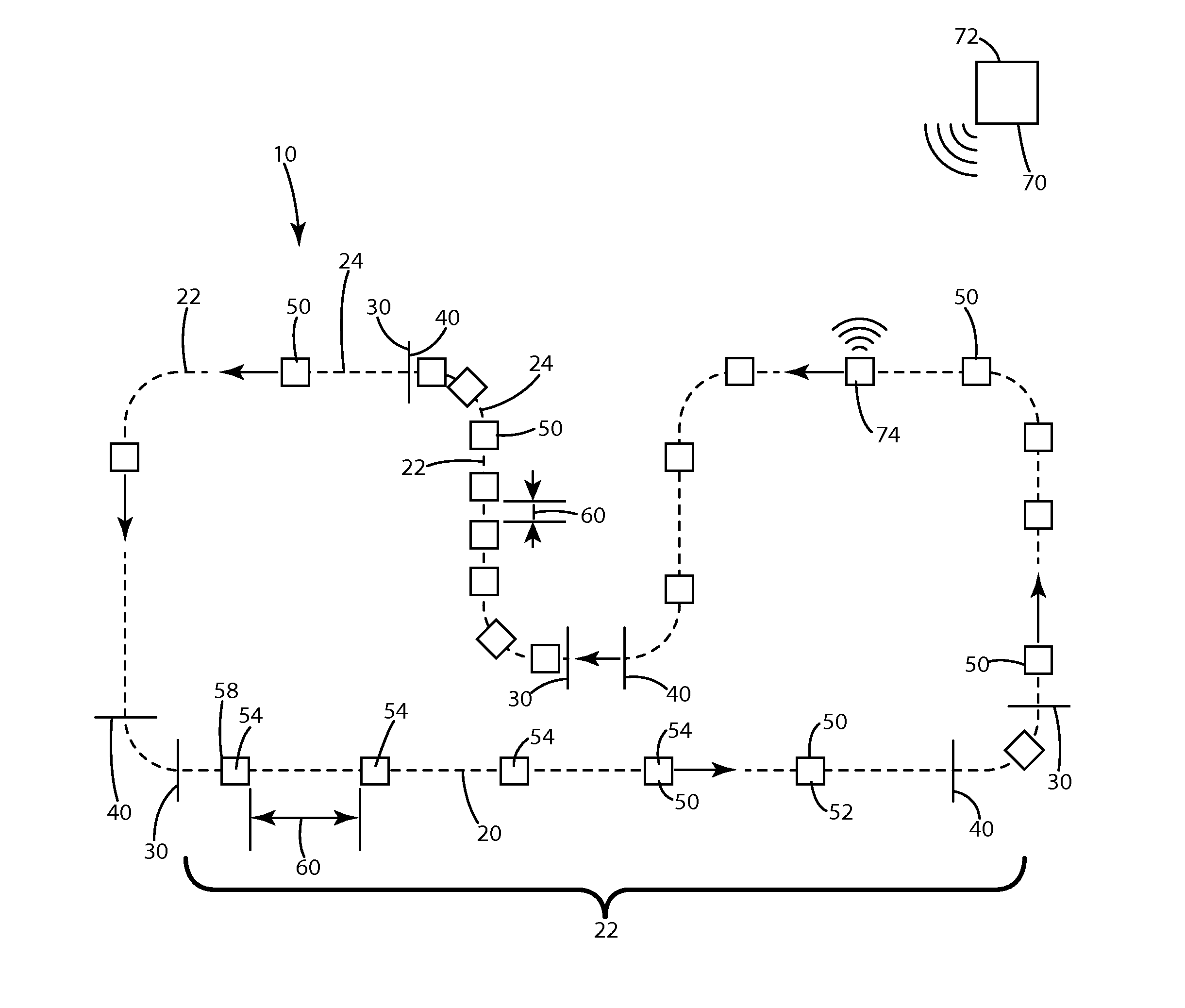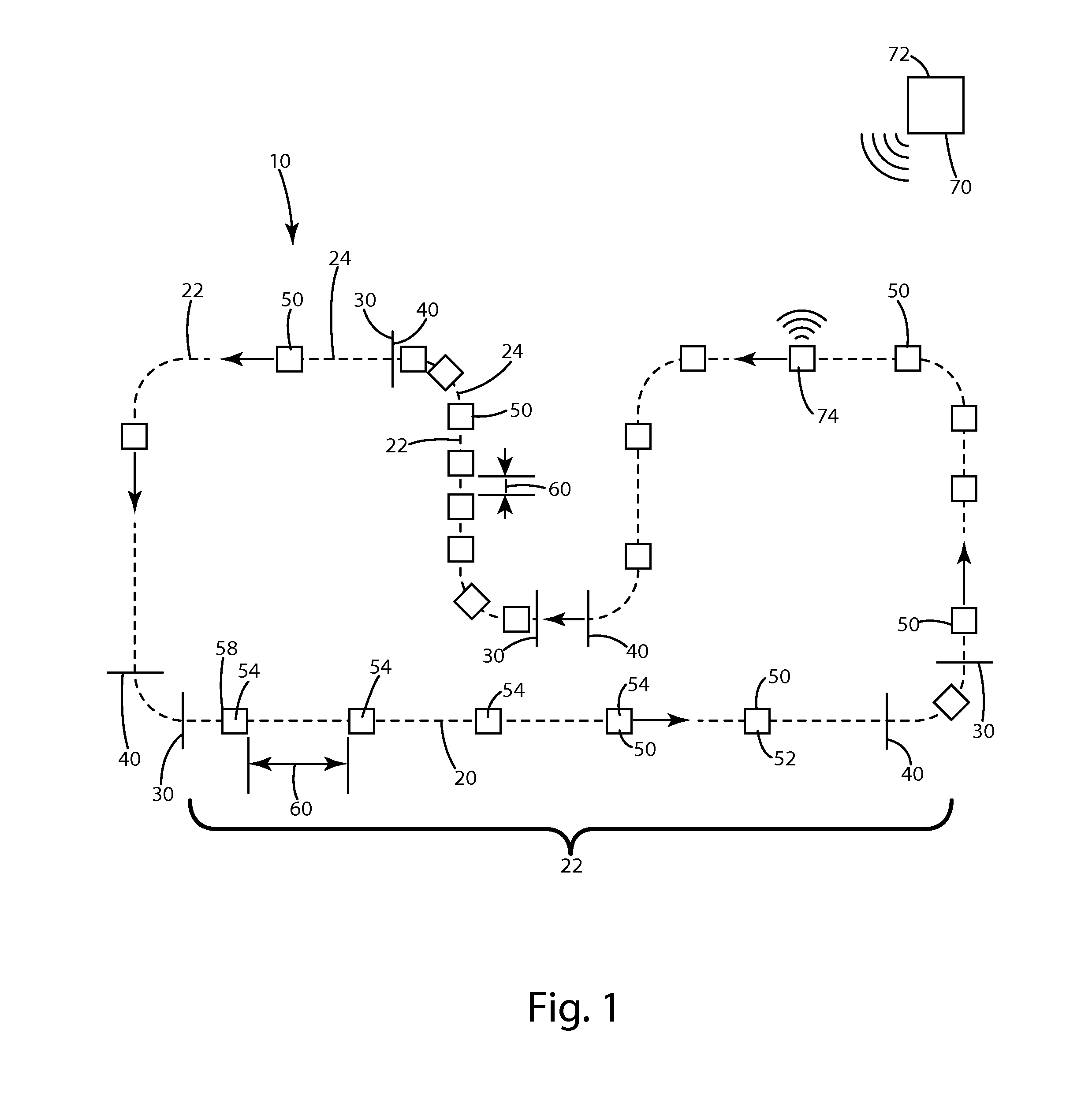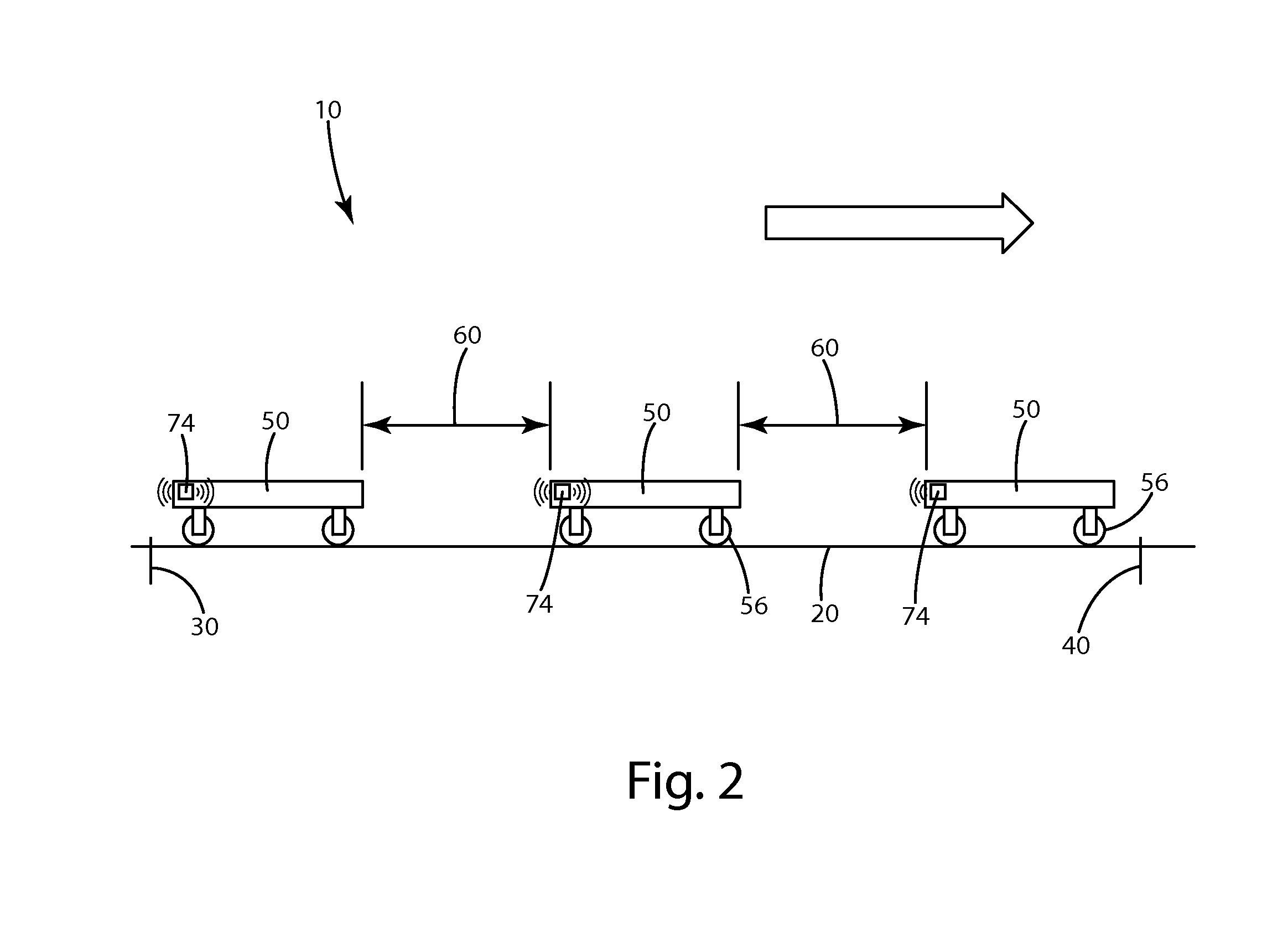Method of material handling with automatic guided vehicles
- Summary
- Abstract
- Description
- Claims
- Application Information
AI Technical Summary
Benefits of technology
Problems solved by technology
Method used
Image
Examples
Embodiment Construction
[0013]The present invention is generally directed to material handling vehicles and more particularly to a system and method of automatic guided vehicles that are capable of providing synchronized travel while achieving a desired takt time along a path such that regular manufacturing operations may be performed to material or workpieces on such automatic guided vehicles without the need for traditional conveyor systems.
[0014]The system 10, as illustrated in FIGS. 1 and 2, generally includes a travel path 20 having individual line segments or portions 22 bounded by an initial line 30 and an end line 40. As an automatic guided vehicle (AGV) 50 travels along the path 20 within the line segment 22, each AGV 50 maintains its position on the floor as a distance from 30 based on its expected speed and the operating time since it passed 30. A vehicle entering the travel path 20 at 30 are allowed to progress when the vehicle immediately ahead of it has traveled a distance 60 from 30. Since e...
PUM
 Login to View More
Login to View More Abstract
Description
Claims
Application Information
 Login to View More
Login to View More - R&D
- Intellectual Property
- Life Sciences
- Materials
- Tech Scout
- Unparalleled Data Quality
- Higher Quality Content
- 60% Fewer Hallucinations
Browse by: Latest US Patents, China's latest patents, Technical Efficacy Thesaurus, Application Domain, Technology Topic, Popular Technical Reports.
© 2025 PatSnap. All rights reserved.Legal|Privacy policy|Modern Slavery Act Transparency Statement|Sitemap|About US| Contact US: help@patsnap.com



